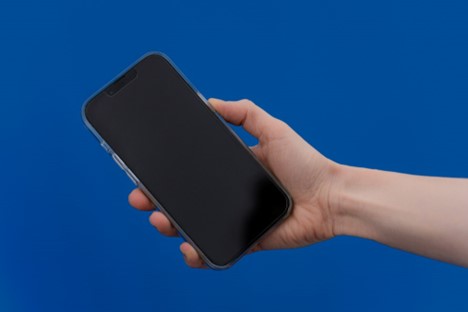In the ever-expanding realm of wireless technology, Bluetooth connectivity has become an integral part of our daily lives, facilitating seamless communication between devices. However, we’ve all experienced the frustration of a forgotten Bluetooth device, leaving us scrambling to reestablish the connection. Fear not, as this step-by-step guide is here to unravel the mystery of unlocking connectivity, ensuring that your Bluetooth devices are effortlessly reunited.

Why Would You Need to Unforget a Bluetooth Device?
Below are some of the reasons why you might need to unforget a Bluetooth device:
Device Reset or Change
If you reset network settings, factory reset on your phone or another device, or if you switch to a new device, you’ll need to unforget Bluetooth devices to establish new connections. This ensures that the old pairing information is cleared, allowing the device to pair with the new one.
Connectivity Issues
When experiencing connectivity problems with a Bluetooth device, unforgetting and re-pairing can often resolve issues. This can be useful if the connection is unstable if the device isn’t recognized, or if there are intermittent disconnections.
Pairing with Multiple Devices
Some Bluetooth devices have limitations on the number of paired devices they can connect to simultaneously. If you’ve reached this limit and want to pair with a new device, you’ll need to unforget a device to make room for the new pairing.
Security and Authorization
Unforgetting a Bluetooth device is a security measure. If you want to prevent unauthorized access to your Bluetooth device, removing its pairing information from your device ensures that only authorized users can establish a connection.
Resolving Interference
In environments with multiple Bluetooth devices or potential signal interference, unforgetting and re-pairing can help establish a cleaner connection. This can be particularly relevant in crowded areas where multiple devices might be attempting to connect simultaneously.
How to Unforget a Bluetooth on Android

Unforgetting a Bluetooth device on an Android device involves a few straightforward steps.
Here’s a simple guide of how to unforget a Bluetooth device on Android:
Access Bluetooth Settings
Open the Settings app on your Android device and navigate to the “Connections” or “Connections & Network” section. Look for the “Bluetooth” option and tap on it to enter the Bluetooth settings.
View Paired Devices
Within the Bluetooth settings, locate the list all your bluetooth devices connected. This section may be named “Paired Devices” or something similar, depending on your device.
Forget the Bluetooth Device
Find the Bluetooth device you want to unforget in the list. Long-press on the device name until a menu appears with device details page. Select the option that says “Forget,” “Unpair,” or “Remove,” depending on your device’s terminology.
Confirm Unpairing
A confirmation prompt may appear asking if you want to unpair or forget the device. Confirm your choice to proceed.
Reconnect if Necessary
If you plan to use the Bluetooth device again, turn on its pairing mode and search for devices on your Android. Once the device appears in the list, tap on it to establish a new connection.
How to Unforget a Bluetooth Device On iPhone
Unforgetting a Bluetooth device on an iPhone is a straightforward process.
Follow these steps:
Access Bluetooth Settings
Open your iPhone’s “Settings” app and tap “Bluetooth.” This can usually be found near the top of the Settings menu.
View Paired Devices
Within the Bluetooth settings, you will see a list of paired devices under the “My Devices,” “My Accessories,” or a similar section.

Forget the Bluetooth Device
Locate the Bluetooth device you want to unforget in the list. Next to the device name, there should be an ‘i’ icon or an information icon. Tap on it to access the device details.
Unpair or Forget Device
Inside the device details, look for an option that says “Forget This Device” or “Disconnect” (the wording may vary slightly depending on your iOS version). Tap on this option.
Confirm Unpairing
A confirmation prompt will appear, asking if you want to forget the device. Confirm your choice.
Reconnect if Necessary
If you plan to use the Bluetooth device again, turn on its pairing mode and go back to the Bluetooth settings on your iPhone. The device should appear in the list of available devices. Tap on it to establish a new connection.
Unforget a Bluetooth Device on Laptop
Unforgetting a Bluetooth device on a laptop typically involves a process similar to that on mobile devices.
Here’s a general guide:
Open Bluetooth Settings
- On Windows: Click on the Start menu, type “Bluetooth” in the search bar, and select “Bluetooth and other devices settings.” Alternatively, you can access it through the Control Panel.
- On macOS: Click on the Apple menu, go to “System Preferences,” and select “Bluetooth.”
Access Paired Devices
- On Windows: In the Bluetooth settings, look for a section that shows your paired devices.
- On macOS: In the Bluetooth preferences, find the list of devices under the “Devices” or “Paired Devices” tab.
Forget the Bluetooth Device
- On Windows: Right-click on the Bluetooth device you want to unforget and select “Remove device” or “Forget this device.”
- On macOS: Control-click or right-click on the device and choose the option to “Disconnect” or “Remove” the device.
Confirm Unpairing
A confirmation prompt may appear on both Windows and macOS. Confirm that you want to unpair or forget the device.
Reconnect if Necessary
If you plan to use the Bluetooth device again, make sure it is in pairing mode. In the Bluetooth settings, initiate a new search for devices and pair the forgotten device again.
These steps may vary slightly depending on your specific laptop model, operating system version, and Bluetooth software. However, the general process involves accessing Bluetooth settings, finding the paired devices list, selecting the device to unforget, and confirming the unpairing action.
How to Troubleshoot Common Bluetooth Connectivity Issues

Below are some of the tips to help you troubleshoot common Bluetooth issues:
Check App Permissions
If you are experiencing Bluetooth issues with a specific app or service, check if the app has the necessary permissions to access Bluetooth. Go to your device settings, find the app, and ensure that Bluetooth permissions are granted to have a Bluetooth enabled device.
Bluetooth Visibility Settings
Make sure that the visibility or discoverability settings on your device are appropriately configured. If your device is not set to be discoverable, other devices might not be able to find it during the pairing process.
Verify Bluetooth Device Status
Ensure that the Bluetooth device you are trying to connect to is in pairing mode or discoverable. Some devices require you to press a button or follow specific steps to enable pairing (click here to know how to fix if your Bluetooth keeps turning off).
Check for System-wide Issues
If Bluetooth issues persist across different devices, it might be a system-wide problem. Restart your device in safe mode (if applicable) to check if third-party apps are causing interference with Bluetooth functionality.
Clear Bluetooth Cache (Android)
On Android devices, Bluetooth-related problems can sometimes be resolved by clearing the Bluetooth cache. Go to the Settings icon> Apps > Bluetooth > Storage, and then clear the cache. Restart your device and check for improvements.
Inspect Physical Connections
For Bluetooth accessories with physical connections (e.g., USB dongles or cables), ensure that they are securely connected to the appropriate ports. Loose connections can result in connectivity issues.
Update Bluetooth Firmware (If Applicable)
Wondering how to update the Bluetooth firmware for your device? Updating the firmware of your Bluetooth device can help resolve connectivity issues for most Bluetooth devices and ensure a smooth and reliable Bluetooth connection.
Here are important steps to update your Bluetooth firmware:
- Visit the manufacturer’s website or the device’s support page to check if there are any available firmware updates for your Bluetooth device.
- If there’s an update available, download the latest firmware version onto your computer or mobile device.
- Follow the manufacturer’s instructions to update the firmware of your Bluetooth device. This may involve connecting your device to your computer or using a dedicated firmware update app.
Reset Your Phone
Resetting network settings or factory settings can help fix Bluetooth technical gliches, including fixing the issues with forgotten Bluetooth devices.
To reset Android network settings:
- Open Settings.
- Go to System > Reset > Reset Wi-Fi, mobile & Bluetooth.
- Confirm the reset.
To reset iPhone’s network settings:
- Open Settings.
- Go to General > Reset > Reset Network Settings.
- Confirm the reset.

Seek Professional Assistance (If All Else Fails)
When all else fails, it’s essential to consider reaching out to experts who specialize in troubleshooting Bluetooth problems. They have the knowledge and experience to diagnose and fix complex issues that may be beyond your expertise. To seek professional assistance, you can start by contacting the manufacturer of your Bluetooth device or reaching out to a certified technician. They’ll guide you through the necessary steps to troubleshoot and resolve the problem.
How to Maintain a Clean and Organized Bluetooth Device List
Here are simple tips to help you achieve this:
- Go through your Bluetooth device list and delete any devices that you no longer use or need. This will declutter your list and make it more manageable.
- Rename your devices with clear and descriptive names. This will make it easier for you to identify them and avoid confusion.
- Create folders or groups within your Bluetooth device list to categorize your devices. This will allow you to quickly locate specific devices based on their purpose or location.
Frequently Asked Questions
What Should I Do if Unforgetting a Device Doesn’t Solve Connectivity Issues?
If unforgetting a device doesn’t resolve connectivity issues, first, ensure that both devices are within the Bluetooth range and there are no obstructions. Attempt to restart both the Bluetooth device and the device you are trying to connect to, as a simple reboot can often address lingering connectivity problems. If the issues persist, check for software updates on both devices, and if necessary, consult the device’s support documentation or contact customer support for further assistance.
How Often Should I Unforget Bluetooth Devices?
Unforgetting Bluetooth devices is typically done on an as-needed basis. If you frequently switch between devices, encounter connectivity problems, or perform a device reset, you may need to unforget and re-pair devices more often. In general, there’s no fixed schedule, and unforgetting should be done when specific circumstances arise that necessitate establishing new connections or resolving issues.
Can I Unforget Multiple Devices at the Same Time?
In most cases, unforgetting Bluetooth devices needs to be done one at a time. The process typically involves accessing the Bluetooth settings, selecting a specific device, and confirming the action individually. This individual approach ensures precise control over which devices are unpaired, maintaining security and preventing unintended disconnections.
Does Unforgetting a Bluetooth Device Delete Its Data or Settings?
No, unforgetting a Bluetooth device does not delete its data or settings. When you unforget a device, it simply removes the pairing information from your device, allowing you to re-pair without affecting the data or settings on the Bluetooth device itself. The unforgetting process is primarily focused on the connection between devices and doesn’t impact the stored information on the Bluetooth device.
Conclusion
Mastering the art of unforgetting Bluetooth devices is a crucial skill in the ever-evolving landscape of wireless connectivity. This step-by-step guide empowers users to navigate the intricacies of unpairing with ease, whether it’s to resolve connectivity issues, switch devices, or establish fresh connections. As we unlock connectivity, the ability to seamlessly manage our Bluetooth devices not only ensures efficient communication but also highlights the importance of adapting to the dynamic nature of modern technology. By following these steps, users can effortlessly embrace the convenience and versatility that Bluetooth connectivity brings to our daily lives.